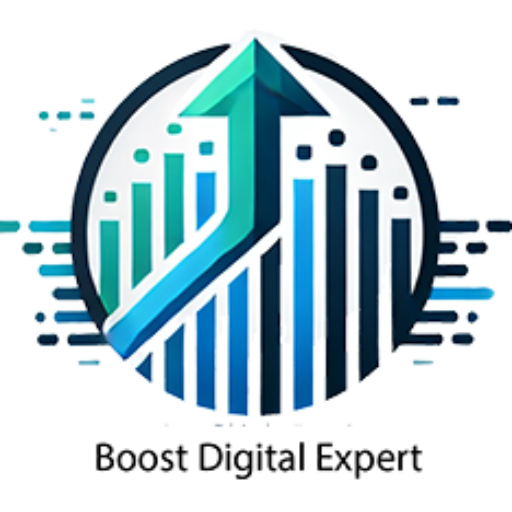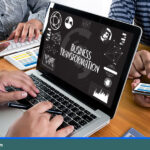Digital agencies are at the forefront of marketing innovation. They bring specialized expertise in areas like SEO, web conversion, and social media. With a finger on the pulse of the latest digital trends, these agencies can provide fresh perspectives that invigorate a company’s marketing strategy.
Creative collaboration between digital agencies and in-house teams is essential for maximizing a brand’s digital success. Boost digital agencies work closely with internal teams by integrating expertise, fresh perspectives, and data-driven strategies to complement existing brand knowledge and goals. By fostering open communication and aligning efforts, agencies ensure seamless execution of campaigns while leveraging in-house teams’ industry insights. This partnership enhances creativity, efficiency, and adaptability, allowing businesses to achieve stronger marketing results and maintain a consistent brand identity across all digital channels.
In today’s fast-evolving digital landscape, agencies and in-house teams are increasingly embracing remote work, transforming how creative and technical projects are executed. The shift to working from home has reshaped collaboration, productivity, and workflow management, offering both challenges and opportunities for digital professionals. While agencies leverage flexibility to attract global talent and reduce overhead costs, in-house teams adapt to decentralized operations while maintaining brand consistency. This new paradigm highlights the importance of digital tools, communication strategies, and agile processes in ensuring seamless delivery—whether teams are across the office or across the world.
The Evolution of Digital Agencies
Digital agencies have evolved significantly since their inception. Initially, they focused on basic online advertising and website design. However, as the digital landscape expanded, so did their range of services. Today, they offer comprehensive solutions that include data analytics, mobile marketing, and even augmented reality experiences. This evolution highlights their adaptability and commitment to staying ahead of the curve.
In today’s constantly changing digital landscape, businesses must embrace a holistic approach to online marketing, combining search engine optimization (SEO), social media marketing, and pay per click strategies to remain competitive. A skilled search engine optimizer leverages data-driven decisions to track performance, enhance search engine friendly content, and boost organic search visibility across Google’s index and search engine results. Crafting relevant category pages, engaging social platforms like Facebook and Twitter, and optimizing business listings help brands connect with existing customers and attract new clients, including Gen Z consumers. By understanding user behavior and aligning keywords, links, and content development with the right job title and services, marketers can drive personalized experiences, improve rankings, and increase brand awareness. Effective advertising on other sites and social media channels drives engagement, ensuring your site stands out in search results, whether users find you through Google search or referrals from media outlets.
Enhancing Search Engine Optimization with Team Synergy
Collaboration between digital agencies and in-house teams allows for a more strategic approach to search engine optimization (SEO). By combining agency expertise with internal brand knowledge, businesses can create targeted content that improves search rankings and enhances organic search visibility.
Maximizing Social Media Marketing Strategies
A successful partnership between agencies and in-house teams strengthens social media marketing campaigns. Agencies offer creative insights and research-driven strategies, while internal teams provide brand authenticity and customer connections. This collaboration results in engaging social media content that drives more impactful online marketing results.
Optimizing Pay-Per-Click Advertising and Online Presence
When agencies and in-house teams work together, pay-per-click (PPC) campaigns become more effective. Agencies analyze data and trends, while in-house teams refine messaging that aligns with brand objectives. This joint effort improves search results and attracts targeted customers, leading to higher conversions and stronger brand growth.
By integrating research, media development, and advertising strategies, digital agencies and in-house teams create a dynamic synergy that enhances marketing performance. With seamless cooperation, businesses can achieve greater success in Google search visibility, customer engagement, and overall brand impact.
How Digital Agencies Operate
Understanding the operational framework of digital agencies is crucial. These agencies often operate in teams, each specializing in a particular aspect of digital marketing. For instance, one team might focus on content creation while another handles analytics and reporting. This division of labor ensures that every facet of a marketing campaign is handled by specialists, thereby increasing efficiency and effectiveness.
The Role of Innovation in Agencies
Innovation is at the heart of every successful digital agency. These agencies constantly experiment with new technologies and methodologies to offer cutting-edge solutions to their clients. Whether it’s utilizing artificial intelligence for predictive marketing or exploring new social media platforms, digital agencies thrive on innovation. This commitment to innovation not only benefits their clients but also sets industry standards.
What is Boost Digital Strategies?
Boost digital agencies focus on enhancing online visibility and driving web traffic. They employ a range of techniques, from SEO strategies to creative content marketing. These agencies aim to optimize web presence and ensure that brands reach their target audience effectively. Boost Digital Expert is a specialized service that focuses on enhancing various aspects of digital marketing to improve conversion rates, traffic, brand engagement, and sales for businesses. Here’s how it helps in each area:
1. Improving Conversion Rates: Boost Digital Expert employs strategies such as A/B testing, optimized landing pages, and effective call-to-action placements to transform website visitors into customers. By analyzing user behavior and making data-driven adjustments, they can pinpoint what resonates with the audience, leading to higher conversion rates.
2. Increasing Traffic: Through targeted SEO strategies, content marketing, and paid advertising campaigns, Boost Digital Expert drives more qualified traffic to a brand’s website. By optimizing content for relevant keywords and leveraging social media channels, they attract potential customers who are actively looking for the products or services the brand offers.
3. Enhancing Brand Engagement: Engaging content and interactive experiences are at the heart of what Boost Digital Expert provides. By creating compelling narratives, utilizing multimedia elements, and fostering community through social media platforms, they cultivate a strong connection between the brand and its audience, encouraging loyalty and ongoing interaction.
4. Boosting Sales: Ultimately, all these strategies work together to elevate sales performance. By ensuring that the customer journey is smooth and enjoyable, from discovery to purchase, Boost Digital Expert helps brands convert engagement into transactions, optimize pricing strategies, and implement effective sales funnels that cater to their target audience.
Boost Digital Expert serves as a comprehensive partner for businesses looking to thrive in the digital realm, leveraging innovative techniques to enhance their online presence and drive significant growth.
Techniques Employed by Boost Digital Agencies
Boost digital agencies utilize a myriad of techniques to enhance a brand’s online presence. Search Engine Optimization (SEO) is a cornerstone, involving keyword research, link-building, and content optimization. Additionally, they engage in content marketing, creating valuable and relevant content to attract and engage target audiences. Social media strategies are also pivotal, leveraging platforms like Instagram and LinkedIn to connect with potential customers.
The Importance of Data-Driven Strategies
Data is the backbone of any successful digital marketing strategy. Boost digital agencies rely heavily on data analytics to inform their decisions. By analyzing user behavior, traffic patterns, and conversion rates, they can fine-tune their strategies for maximum impact. This data-driven approach ensures that marketing efforts are not only effective but also efficient, targeting the right audience at the right time.
Impact on Brand Visibility
The primary goal of boost digital agencies is to increase brand visibility. Through a combination of SEO, social media marketing, and content creation, these agencies help brands stand out in a crowded digital landscape. By enhancing a brand’s online presence, they ensure that it reaches a wider audience, ultimately driving more traffic and increasing sales.
Why Collaborate with Digital Agencies?
Access to Specialized Expertise
Digital agencies house professionals who are experts in various fields such as SEO, social media marketing, and digital technology. Collaborating with these experts means your business benefits from cutting-edge strategies without having to hire full-time specialists.
Leveraging Industry Knowledge
The expertise of digital agencies extends beyond technical skills. These agencies have a deep understanding of industry trends and consumer behavior. By collaborating with them, businesses can tap into this wealth of knowledge, gaining insights into market shifts and emerging opportunities. This knowledge can be instrumental in shaping effective marketing strategies that resonate with target audiences.
Staying Ahead of Technological Advancements
Technology is constantly evolving, and keeping up with the latest advancements can be challenging for in-house teams. Digital agencies are well-versed in the latest tools and technologies, from machine learning algorithms to advanced analytics platforms. By partnering with an agency, businesses can leverage these technologies to enhance their marketing efforts, ensuring they remain competitive in a rapidly changing digital landscape.
Flexibility and Scalability
Working with a digital agency offers flexibility. Whether you need a full-fledged marketing campaign or a minor tweak, agencies can scale their services to fit your needs. This adaptability is perfect for businesses that experience fluctuating marketing demands.
Customized Solutions for Varied Needs
One of the significant advantages of digital agencies is their ability to provide customized solutions. Whether a business requires a comprehensive digital overhaul or targeted campaign efforts, agencies can tailor their services to meet specific needs. This customization ensures that marketing strategies align with business objectives, delivering optimal results.
Adapting to Market Fluctuations
Market conditions can be unpredictable, and businesses need to adapt quickly to remain competitive. Digital agencies offer the scalability to adjust marketing efforts in response to these changes. Whether it’s ramping up efforts during peak seasons or scaling back during slower periods, agencies provide the flexibility needed to navigate market fluctuations effectively.
Cost-Effectiveness
Hiring a digital agency can be more cost-effective than building an in-house team with the same level of expertise. Agencies bring a wealth of experience and resources, often providing a better return on investment.
Reducing Overhead Costs
Building an in-house team requires significant investment in terms of salaries, training, and infrastructure. Digital agencies eliminate these overhead costs, providing businesses with access to top-tier talent without the associated expenses. This cost-efficiency allows businesses to allocate resources more strategically, focusing on other critical areas of growth.
Maximizing Return on Investment
Digital agencies are results-driven, focusing on delivering measurable outcomes. By leveraging their expertise and resources, businesses can achieve a higher return on investment compared to in-house efforts. Agencies employ data-driven strategies to optimize marketing campaigns, ensuring that every dollar spent contributes to achieving business objectives.
How to Achieve Effective Collaboration
To make the most of your partnership with a digital agency, effective collaboration is key. Here’s how to make it happen:
Clear Communication
Tools like Slack and Asana are vital for maintaining open lines of communication. They help track project timelines, manage tasks, and ensure everyone is on the same page. Regular updates on project status and KPIs (Key Performance Indicators) keep both teams aligned.
Establishing Communication Protocols
Setting up clear communication protocols is essential for effective collaboration. This involves determining the preferred communication channels, frequency of updates, and key points of contact. By establishing these protocols early on, both teams can ensure smooth communication throughout the project lifecycle, minimizing misunderstandings and enhancing productivity.
Utilizing Technology for Seamless Interaction
The use of technology in facilitating communication cannot be overstated. Tools like video conferencing software and collaborative platforms enable real-time interaction, breaking geographical barriers. These technologies foster a sense of connectedness, allowing teams to collaborate effectively regardless of location, thereby enhancing the overall efficiency of the project.
Defined Roles and Responsibilities
Establishing clear roles helps prevent confusion and overlaps. Knowing who is responsible for each task allows the project to move forward smoothly. This also ensures accountability and helps in managing expectations.
Role Clarity for Enhanced Productivity
Defining roles and responsibilities is crucial for ensuring efficiency. By clearly outlining each team member’s role, businesses can prevent task duplication and ensure that all aspects of the project are covered. This clarity not only enhances productivity but also fosters a sense of ownership and accountability among team members.
Aligning Responsibilities with Expertise
Assigning tasks based on expertise ensures that each aspect of the project is handled by the most qualified individuals. By leveraging the strengths of both in-house teams and digital agencies, businesses can maximize the effectiveness of their marketing efforts. This alignment of responsibilities with expertise is key to achieving desired outcomes.
Regular Check-ins and Feedback
Frequent meetings and feedback loops ensure that the project stays on track. They provide opportunities to address any issues promptly and make necessary adjustments. This iterative process is crucial for continuous improvement and achieving desired outcomes.
The Importance of Continuous Feedback
Feedback is a vital component of successful collaboration. Regular feedback loops allow teams to identify areas for improvement and make necessary adjustments. By fostering a culture of openness and constructive criticism, businesses can enhance the overall effectiveness of their marketing efforts.
Adapting Strategies Through Iterative Processes
The digital landscape is ever-changing, and strategies need to evolve accordingly. Regular check-ins provide opportunities to assess the effectiveness of current strategies and make necessary adjustments. This iterative approach ensures that marketing efforts remain relevant and impactful, driving desired outcomes.
Tools for Creative Collaboration
Project Management Software
Asana and Trello are popular project management tools that facilitate collaboration between digital agencies and in-house teams. These platforms allow teams to track progress, set deadlines, and manage resources efficiently.
Streamlining Workflow with Project Management Tools
Project management software plays a critical role in streamlining workflow. These tools provide a centralized platform for task management, enabling teams to assign tasks, set priorities, and monitor progress. By enhancing organization and accountability, project management tools facilitate efficient collaboration and project execution.
Enhancing Visibility and Transparency
Visibility is key to successful collaboration. Project management tools provide real-time insights into project status, ensuring that all team members are aware of deadlines and deliverables. This transparency fosters trust and accountability, allowing teams to work cohesively towards achieving common goals.
Communication Platforms
Slack is a favorite for real-time communication. It supports team collaboration by enabling quick discussions and instant updates. This immediacy helps maintain momentum and fosters a collaborative environment.
Fostering Real-Time Communication
Real-time communication is essential for maintaining project momentum. Platforms like Slack enable instant messaging and quick discussions, ensuring that teams can address issues promptly. This immediacy fosters a collaborative environment, allowing teams to stay aligned and focused on achieving project objectives.
Building a Collaborative Culture
Communication platforms also play a role in building a collaborative culture. By facilitating open dialogue and encouraging knowledge sharing, these tools help break down silos and foster a sense of community. This collaborative culture is instrumental in driving innovation and achieving successful outcomes.
Collaborative Design Tools
For creative projects, tools like Adobe Creative Cloud or Canva enable seamless collaboration. These platforms allow teams to share design assets and work together on creative tasks, ensuring brand consistency and quality.
Enhancing Creativity Through Collaboration
Collaborative design tools facilitate creativity by enabling teams to work together on design projects. These platforms provide a space for brainstorming, sharing ideas, and refining concepts. By fostering collaboration, design tools enhance creativity, ensuring that marketing materials are not only visually appealing but also aligned with brand identity.
Ensuring Consistency in Creative Outputs
Consistency is crucial in maintaining a cohesive brand image. Collaborative design tools allow teams to share design assets and templates, ensuring that all creative outputs adhere to brand guidelines. This consistency enhances brand recognition and reinforces brand identity across all marketing channels.
Case Study: Successful Agency-In-House Collaboration
Consider the case of a mid-sized e-commerce company that partnered with a digital marketing agency to boost its online presence. By integrating agency expertise with the in-house team’s product knowledge, they achieved remarkable results.
The Approach
The agency focused on enhancing SEO strategy and revamping the social media approach. Meanwhile, the in-house team provided valuable insights into customer behavior and preferences. This collaboration led to the development of targeted marketing campaigns that resonated well with the audience.
Strategic Integration of Expertise
The collaboration was built on the strategic integration of expertise. The digital agency brought in-depth knowledge of SEO and social media strategies, while the in-house team contributed insights into customer preferences and product offerings. This integration of expertise allowed for the development of marketing campaigns that were not only targeted but also deeply resonant with the audience.
Tailoring Campaigns to Audience Needs
One of the key successes of this collaboration was the ability to tailor marketing campaigns to meet audience needs. By leveraging customer insights provided by the in-house team, the agency developed campaigns that addressed specific pain points and preferences. This customer-centric approach enhanced engagement and drove higher conversion rates.
The Outcome
The synergy between the teams resulted in a significant increase in web traffic and conversion rates. The company saw a 30% boost in online sales within just six months of the partnership. This case underscores the power of effective collaboration.
Achieving Measurable Outcomes
The collaboration yielded measurable outcomes, including a 30% increase in online sales. This success was attributed to the combined efforts of the digital agency and the in-house team, who worked together to optimize marketing strategies. The achievement of these outcomes underscores the potential of collaboration in driving business growth.
Sustaining Long-Term Success
Beyond immediate results, the collaboration laid the foundation for sustained success. By building a strong partnership, the company and the agency established a framework for ongoing collaboration. This foundation ensures that the company can continue to adapt and thrive in the ever-changing digital landscape.
Challenges and Solutions
While the benefits of collaboration are clear, it’s not without challenges. Here are common hurdles and how to overcome them:
Cultural Differences
Different work cultures can lead to misunderstandings. Establishing a collaborative culture that values diversity and open-mindedness can bridge these gaps.
Bridging Cultural Gaps
Cultural differences can pose challenges in collaboration, leading to misunderstandings and conflicts. To bridge these gaps, it’s essential to foster a culture of inclusivity and open-mindedness. Encouraging team members to appreciate diverse perspectives and embrace cultural differences can enhance collaboration and drive innovation.
Building a Unified Team Culture
Creating a unified team culture involves aligning values and establishing a shared vision. By focusing on common goals and fostering a sense of belonging, businesses can build a cohesive team culture that transcends individual differences. This unified culture is instrumental in overcoming cultural barriers and achieving successful collaboration.
Misaligned Goals
Ensure that both teams have a shared understanding of goals and objectives from the outset. Regular alignment meetings can help maintain focus and direction.
Establishing Shared Objectives
Misaligned goals can hinder collaboration and lead to inefficiencies. To overcome this challenge, it’s crucial to establish shared objectives from the outset. By aligning goals and ensuring that both teams are working towards common outcomes, businesses can enhance collaboration and drive successful project execution.
Maintaining Alignment Through Ongoing Communication
Regular alignment meetings play a critical role in maintaining focus and direction. These meetings provide opportunities to reassess goals, address any misalignments, and ensure that all team members are on the same page. By maintaining ongoing communication, businesses can navigate challenges and keep projects on track.
Resistance to Change
Change can be daunting, especially for in-house teams accustomed to certain workflows. Offering training and fostering a culture of innovation can ease the transition.
Overcoming Resistance Through Education
Resistance to change is a common challenge in collaborative efforts. To overcome this resistance, it’s essential to offer training and education that equips team members with the skills and knowledge needed to adapt to new workflows. By empowering team members through education, businesses can ease the transition and foster a culture of innovation.
Encouraging a Culture of Adaptability
Fostering a culture of adaptability involves encouraging team members to embrace change and view it as an opportunity for growth. By promoting a mindset of continuous improvement and innovation, businesses can create an environment where team members are open to new ideas and willing to adapt to changing circumstances.
The Future of Creative Collaboration
As digital marketing continues to evolve, the collaboration between digital agencies and in-house teams will become increasingly vital. The integration of diverse expertise not only drives innovation but also ensures that businesses remain agile and competitive.
Embracing Technological Advancements
The future of creative collaboration will be shaped by technological advancements. As new tools and platforms emerge, businesses will need to adapt and integrate these technologies into their collaborative efforts. Embracing technological advancements will enhance efficiency and enable teams to deliver innovative solutions that meet evolving market demands.
Fostering a Culture of Continuous Learning
Continuous learning will be a cornerstone of future collaboration. As the digital landscape evolves, both digital agencies and in-house teams will need to stay informed about the latest trends and best practices. By fostering a culture of continuous learning, businesses can ensure that their teams remain at the forefront of innovation.
Building Stronger Partnerships for Long-Term Success
The future of collaboration will be characterized by stronger partnerships between digital agencies and in-house teams. By building long-term relationships based on trust and mutual respect, businesses can create a collaborative ecosystem that drives sustained success. These partnerships will enable businesses to navigate the complexities of the digital landscape and achieve their marketing goals.
In conclusion, creative collaboration is the cornerstone of successful digital marketing. By leveraging the strengths of both digital agencies and in-house teams, businesses can navigate the complexities of the digital landscape and achieve their marketing goals.
Conclusion
In conclusion, the synergy between digital agencies and in-house teams is vital for driving successful outcomes in today’s fast-paced digital landscape. Creative collaboration fosters innovation, enhances efficiency, and leverages the unique strengths of both parties. By establishing clear communication channels, setting mutual goals, and embracing a culture of openness, agencies and in-house teams can work together seamlessly. This partnership not only accelerates project timelines but also enriches the creative process, ultimately delivering exceptional results. As we move forward, fostering these collaborative relationships will be key to navigating future challenges and seizing new opportunities in the digital space.
Creative collaboration between digital agencies and in-house teams is essential for maximizing a brand’s digital success. Boost digital agencies work closely with internal teams by integrating expertise, fresh perspectives, and data-driven strategies to complement existing brand knowledge and goals. By fostering open communication and aligning efforts, agencies ensure seamless execution of campaigns while leveraging in-house teams’ industry insights. This partnership enhances creativity, efficiency, and adaptability, allowing businesses to achieve stronger marketing results and maintain a consistent brand identity across all digital channels.










Leave a Reply